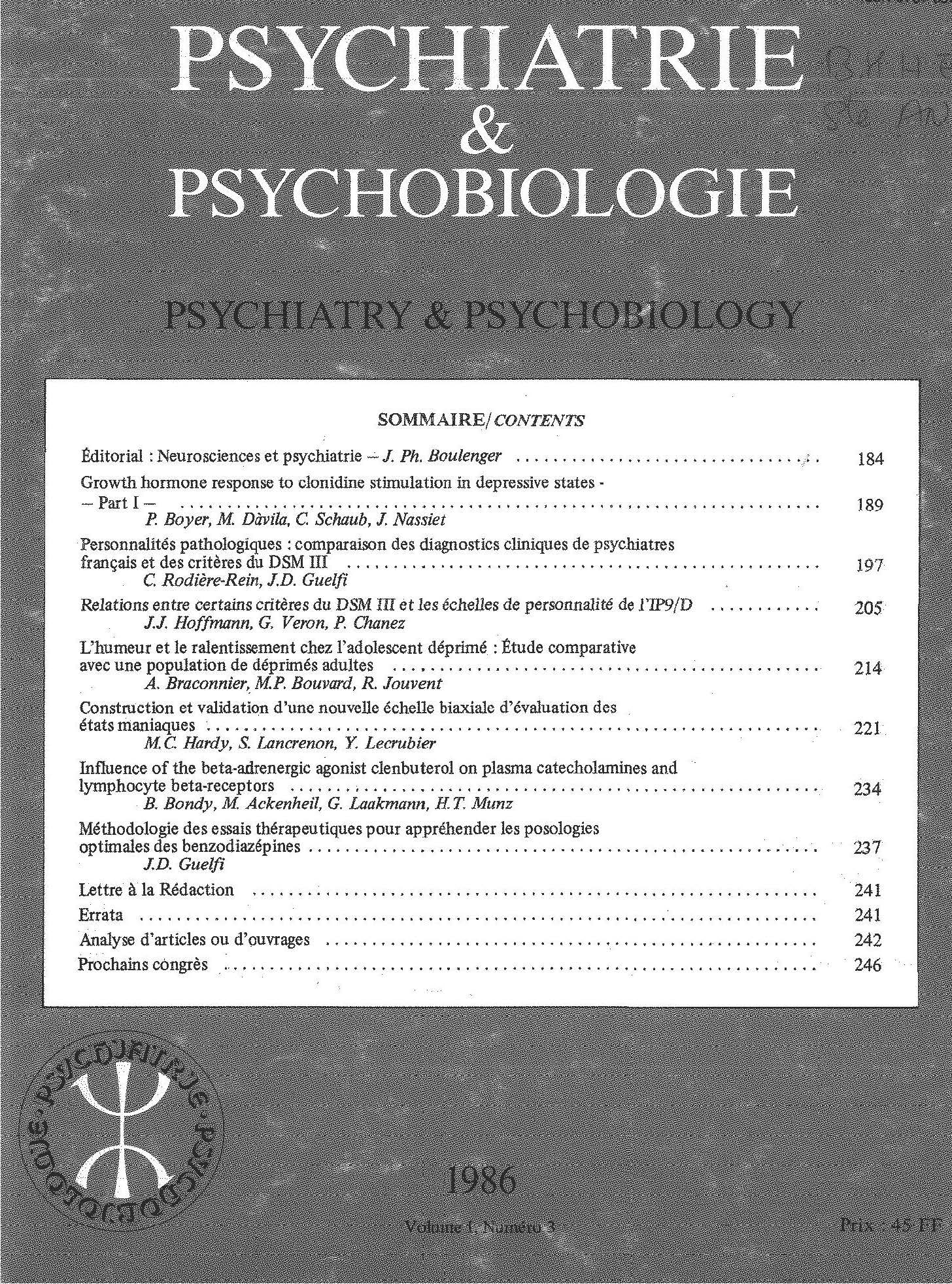No CrossRef data available.
Article contents
Une voie de recherche en psychopathologie quantitative: présentation des travaux de P. Bech
Published online by Cambridge University Press: 28 April 2020
Résumé
Les travaux de P. Bech sont principalement axés vers l’amélioration des qualités psychométriques des échelles d’évaluation psychiatrique déjá existantes. Dans ce but, P. Bech propose plusieurs techniques:
– la plus importante, résidant dans l’utilisation du modéle logistique de Rasch: le modéle de Rasch permet de s’assurer, á l’encontre de l’analyse factorielle, de la valeur d’une somme de notes d’item en vue de la mesure d’une dimension. La position (paramétre) des item sur la dimension est estimée indépendamment de la population, et les estimations sont donc théoriquement absolues. Par conséquent, si le modéle est bien adapté, les paramétres d’un item doivent rester stables, quelles que soient les caratéristiques de l’échantillon (sexe, age, diagnostic par exemple). De surcroît, le test d’ajustement du modéle de Rasch permet une vérification de l’unidimensionnalité de l’échelle;
– l’introduction, pour tous les degrés d’un item, d’une définition opérationnelle précise;
– et enfin, la recommandation de regrouper les scores globaux d’une échelle en un nombre restreint de catégories.
Bech propose également que plusieurs échelles ainsi remaniées soient réunies au sein d’un inventaire de psychopathologie générale qui posséderait plusieurs avantages, dont celui de dimensions mieux individualisées, sur les inventaires classiques.
Summary
Bech's work is principally focused on the improvement of the psychometric qualities of the already existing psychiatric rating scales. In this aim, Bech has proposed some techniques.
The most important resides in the use of Rasch's logistic model: this model allows to check, contrary to factor analysis, that a simple sum of item scores is a good measure of a dimension. The item location (parameter) on the dimension is estimated independently of the population, and the estimations are thus theoretically absolute. Consequently, if the model fits the data, the item parameters must remain stable, whatever the characteristics of the sample (sex, age, diagnosis for instance). Additionally the goodness of fit of the test with Rasch's model permits checking the unidimensionality of the scale;
— the introduction, for all degrees of each item, of precise operational definitions;
— finally, the recommendation to group together the overall scores of a scale into a more restricted number of categories.
Bech equally proposed that several scales so improved be put together within a general psychopathology inventory, which would possess numerous advantages compared to classical inventories, such as more distinct dimensions.
- Type
- Article original
- Information
- Copyright
- Copyright © European Psychiatric Association 1989



Comments
No Comments have been published for this article.